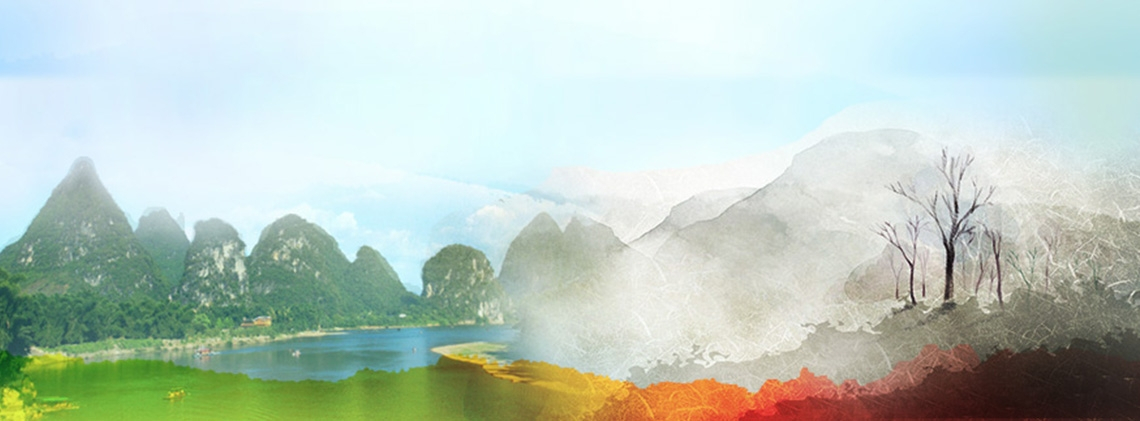
South China Karst
Splendid
Chi Culture
Topic
South China Karst
The South China Karst comprises a series of heritage sites that were inscribed on the UNESCO World Natural Heritage List in two phases. Those sites inscribed in the first phase in 2007 include Shilin (Stone Forest) Karst in Yunnan, Libo Karst in Guizhou, and Wulong Karst in Chongqing. In 2014, four more sites were added onto the list—Shibing Karst in Guizhou, Jinfoshan Karst in Chongqing, Guilin Karst in Guangxi, and Huanjiang Karst in Guangxi. The latter is an extension of Libo Karst in Guizhou.
Centered on the Yunnan-Guizhou Plateau, the southern China region including Yunnan, Guizhou, Guangxi, and Chongqing contains the most representative karst landforms. Its bio-ecological richness makes it a home to a wide variety and rare concentration of plants and animals.
The Stone Forest in Yunnan is the only karst formation in the world with geological and geomorphic wonders located in a subtropical region. It is unique in that it can demonstrate the earth’s evolutionary history through observation of the traces left behind by the Stone Forest’s development traces and by scrutinizing changes in the landscape.
The Libo Karst is an outstanding representative of karst in South China because of its iconic cone-shaped land formations and the unusual ecological processes evident there. The Libo Karst Scenic Area includes the Maolan National Nature Reserve, and the Daqikong (Large Seven-Hole Bridge) and Xiaoqikong (Small Seven-Hole Bridge) scenic sites of the Libo-Zhangjiang National Key Scenic Area.
Huanjiang Karst and Libo Karst naturally formed into one body, preserving a complete system of morphological changes that show the gradual transition from plateau karst to low mountain and hilly karst. It shows such formations as cone karst, tower karst, low-lying depressions, valleys, and caves. It is the largest area of karst landforms in the world, and the karst forest there is the most primitive and best preserved in the world.
The Wulong Karst is located in the crustal uplift of the Yangtze gorges. There are plentiful formations, such as gorges, plateaus, and vadose zones, which gave birth to the “King of Limestone Caves”—Furong (lotus) Cave, the world’s tallest linked-bead type natural bridges (among which are the “Three Natural Bridges”), the Houping group of sinkholes (sometimes known as dolines), and the pit caves near Tianxing. These landforms can be called “Three-dimensional karst.”
The Shibing Karst is characterized by canyons of cone-like peak-clusters; it possesses a unique and incomparable natural beauty in many ways, and the types of formations here fill the gaps seen in the development of dolomite karst in South China. These karsts are outstanding examples of both tropical and subtropical development.
The landforms at Jinfoshan Karst are rich and comprehensive. The main ones include tableland, steep cliffs, single-face mountains, canyons, hanging valleys, limestone caverns, pinnacle karst, rock pillars, natural bridges, sinkholes, skylights, steephead (blind) valleys, underground streams and rivers, springs, and waterfalls. Well-known mountain peaks include Fengchuiling (Wind-blowing ridge), Bijiashan (Penholder mountain), Muzi feng (Mother and son peak), Shiren feng (Stone men peak), Muzhi feng (Thumb peak), Hou’ershan (Monkey mountain), Qingtian zhu (Heaven supporting pillar), and Zengzishan (Rice steamer mountain).
Guilin has a typical karst landscape; it is situated in a basin that extends from northwest to southeast. The middle and low mountainous terrain has karst mountains, hills, and tableland. The most representative areas are the karst cluster of Lijiang (river) valley and the karst forest of the Grape Mountain.
The Yangtze River cuts through the Wushan Mountains, from north to south. The high mountain gorge is unusually developed with major karst features including both a dry valley and a suspended valley, sinkholes, and rock pillars. The unusual mountains and rocks are known for their grandeur, uniqueness, dangerousness, and elegance. They are also known for their natural wonders and rich finds of historical relics.



